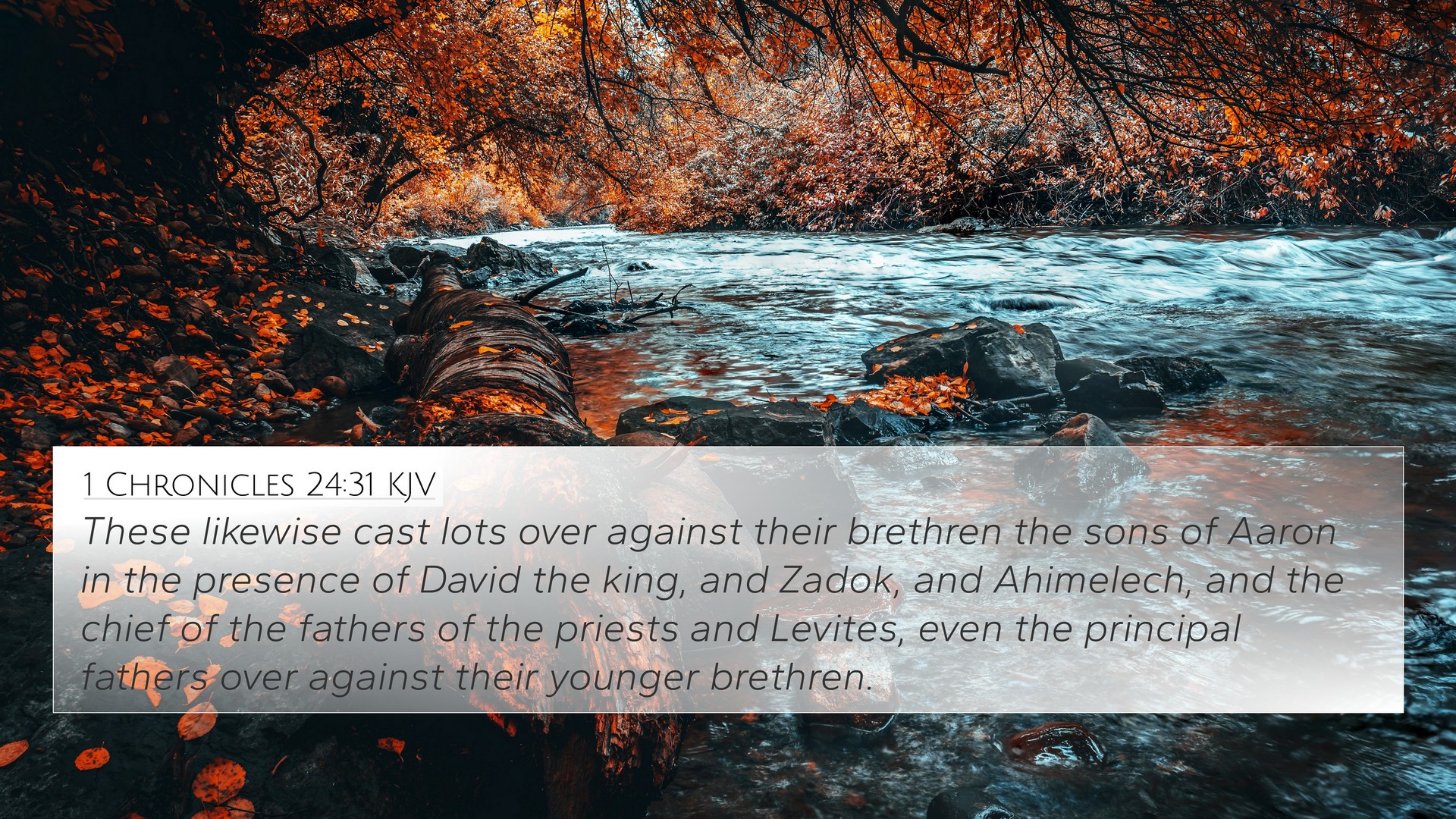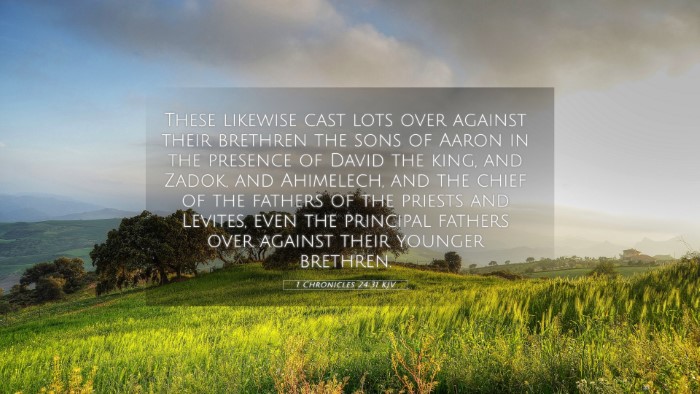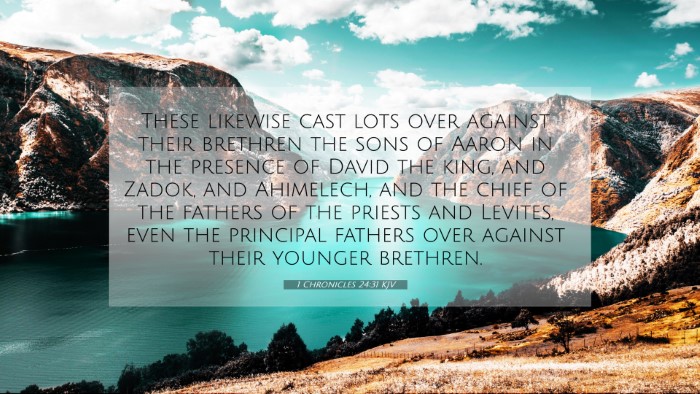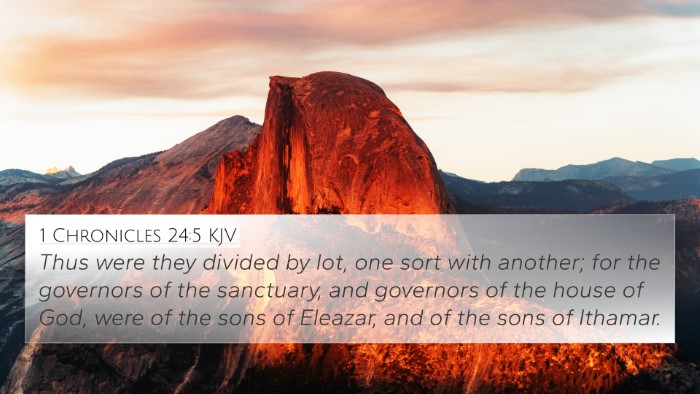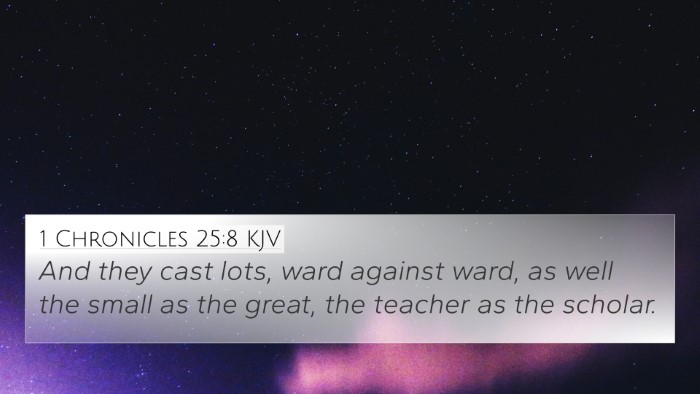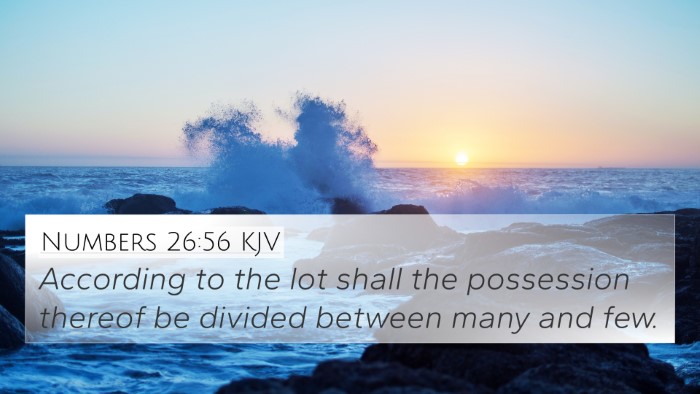Understanding 1 Chronicles 24:31
The verse 1 Chronicles 24:31 provides an important insight into the organization of the Levitical priesthood.
This passage recounts the distribution of priestly duties among the sons of Aaron, emphasizing their unique responsibilities
in the service of the Lord.
Verse Summary
In this verse, it is noted that "these likewise cast lots over against their brethren the sons of Aaron in the presence
of David the king, and Zadok, and Ahimelech, and the chief of the fathers of the priests and Levites." This reflects the
methodical approach taken by Israel to appoint the priests and Levites, ensuring order and fairness in their duties.
Combined Commentary Insights
-
Matthew Henry:
Henry notes that the casting of lots was a divine method intended to determine God's will regarding service.
This practice indicates the divine oversight in the selection of priests and the orderly function of religious duties.
-
Albert Barnes:
Barnes highlights the importance of the lot system, suggesting it was not merely chance but an act of faith,
trusting that God would guide the outcomes for the division of responsibilities among the priests and Levites.
-
Adam Clarke:
Clarke elaborates on the symbolism behind the division of duties, asserting that each priest's role was significant
in the broader context of worship and ceremony within the temple, enhancing the reverence and structure of the Jewish faith.
Thematic Connections
This verse can be linked to several thematic elements in the Bible concerning order, leadership, and divine guidance.
The organization of the priestly duties maintains a structure crucial for the worship of God, reflecting God's nature and
the importance of holiness in service.
Cross-References
-
Numbers 26:55-56: Discusses the casting of lots for the division of land among the tribes of Israel, showcasing God's providential control in communal matters.
-
1 Samuel 10:20-21: References the casting of lots to identify Saul as king, underscoring the significance of this method in determining God's chosen leaders.
-
Psalm 22:18: Illustrates a similar concept of division by lots, reflecting a practice associated with divine providence in significant decisions.
-
Acts 1:24-26: Describes the apostles casting lots to choose Matthias as Judas's replacement, reiterating a principle of seeking divine guidance.
-
Luke 1:5: Introduces the priestly division of Abijah, which ties into the overall structure of priesthood, linking it back to the lineage of Aaron.
-
Hebrews 5:4: Discusses the divine calling to the priesthood, affirming that no one takes this honor upon themselves but is called by God.
-
Exodus 28:1: Speaks of the formal appointment of Aaron and his sons as priests, laying the foundation for the continued structure of Levite service.
-
1 Chronicles 28:13: References the establishment of service and divisions among priests and Levites, reinforcing the idea of organized service.
-
Malachi 2:7: Mentions the duty of priests to impart knowledge and uphold the covenant, highlighting the spiritual responsibilities attached to their roles.
Insights on Priesthood and Service
The organization of priests as described in 1 Chronicles 24:31 is crucial for understanding how the Israelites connected
to God through structured worship. Each priest's duty represented a sacred task, reflecting both their relationship with
God and the community.
Conclusion
1 Chronicles 24:31 illustrates not just an administrative decision but a significant representation of God's order within
His chosen people. This orderly division of responsibilities among the priests underscores the sacred nature of their service
and the overarching purpose of worship in the community of Israel, linking it to various biblical themes and other scriptures
that support the notion of divine guidance in selection and duty.
